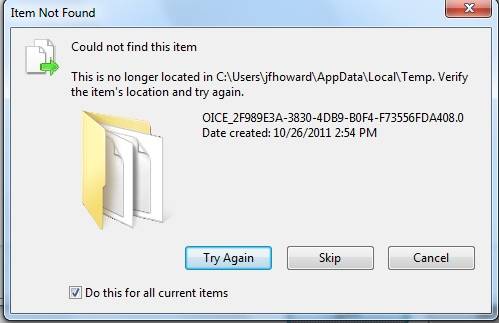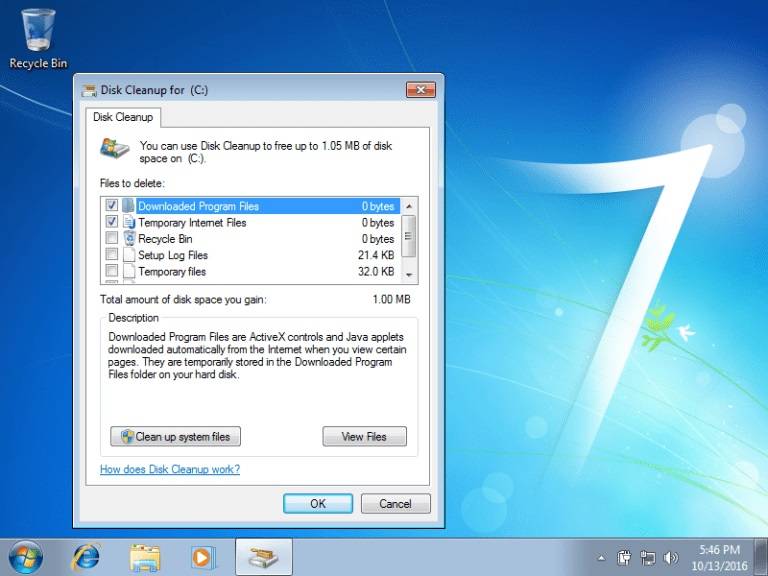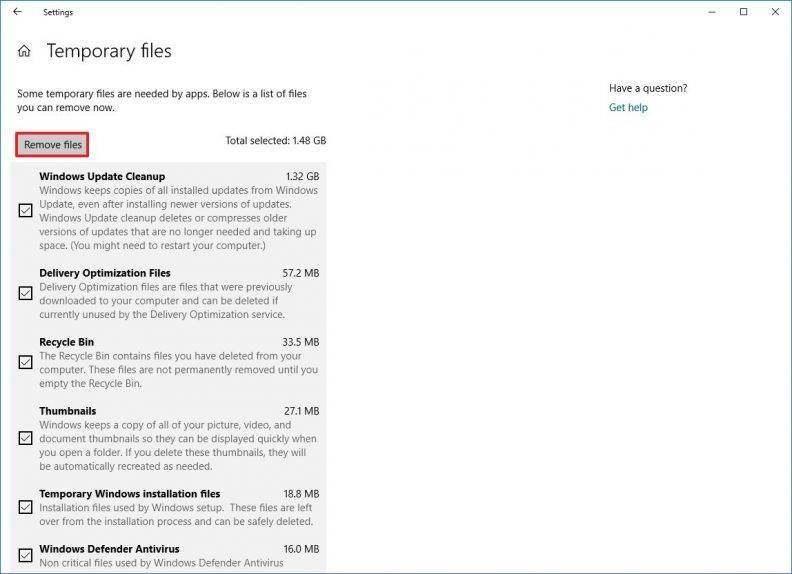- Правильная Очистка Папки Temp Windows XP 7 8 10 Три Метода
- Можно ли удалить папку Temp и для чего она необходима?
- Где находится папка Temp?
- Открываем скрытые файлы
- Как очистить папку Temp?
- Чистим ручным методом
- Утилита очистка диска
- Очищаем диск программой оптимизатором
- Видео Ускоритель компьютера
- How to Delete Temporary Files on Windows 7/10
- This post will teach you how to safely delete or clear temp files on your Windows 7/10. Temp or temporary files aid software’s performance. But when excessive, they could eat up your space and slow down the performance of your device.
- Part 1: What are the Temporary Files?
- Part 2: Where are Temporary Files Stored?
- Part 3: Why should I remove Temporal Files?
- Part 4: How to Clear Temp Files through Deleting Windows Temp Folder
- Option 1. Selectively delete files.
- Option 2. Delete all temp files.
- Part 5: How to Clear Temp Files by Command Line
- Method 1. Working directly from the command line.
- Method 2. Using a batch (.bat) file.
- Part 6: How to Clear Temp Files using Windows Disk Cleanup
- Part 7: How to Clear Temp Files in Settings on Windows 10 Version 1903 or Later
- Part 8: How to Clear Temp Files through Searching for .tmp Files
- Part 9: How to Clear Temp Files with One-click using Stellar Biteraser
- Conclusion
Правильная Очистка Папки Temp Windows XP 7 8 10 Три Метода
Добрый день, друзья. Очистка папки Temp windows, так ли она необходима, или без этого можно обойтись? Я в своих статьях уже много раз упоминал про эту системную папку, но статью именно про эту папочку ещё ни разу не писал и для чего именно она создана, также не упоминал. В этой статье мы восполним данный пробел.
Мы уже упоминали про разные средства освобождения места на системном диске, так как этот диск, особенно если на нём мало места, очень быстро может забиться системным хламом, и вам компьютер, насколько бы он не был новым, начнёт медленно работать.
Я уже говорил, и повторю ещё раз, в любом разделе системы Windows должно быть по крайней мере 20% свободного пространства, иначе могут начаться проблемы с этим разделом. Особенно это касается системного диска. Всем системным файлам нужно свободное место для бесперебойного функционирования. Иначе, говоря русским языком, файлам негде будет развернуться, и могут начаться различные сбои и ошибки.
Можно ли удалить папку Temp и для чего она необходима?
Скорее всего, вы её удалить не сможете, так как в ней будут присутствовать программы, функционирующие на данный момент. Но, давайте вначале разберёмся, для чего она нужна?
Итак, в системе Windows все папочки с файлами разделяются по определённым параметрам. Их можно разделить на папочки системы, и папочки пользователя.
Папочки и файлы системы, это те из них, которыми пользуется только сама ОС Виндовс для своего нормального функционирования. Когда человек вмешивается в работу таких файлов, к примеру, удаляет их, для общей работы компьютера это действие может кончиться плачевно. Компьютер начнёт работать со сбоями, или вообще перестанет запускаться.
Но, а если человек деинсталлирует пользовательскую папочку, на саму систему это никоим образом не повлияет. Просто у вас перестанет работать программа, папку которой вы удалили. Или же в ней начнутся ошибки и сбои. В таком случае, данную программу лучше полностью удалить, и установить заново, если у вас остался её дистрибутив.
По поводу папочки Temp, хочу сказать, что она папка относится именно к системным. Её название является сокращением слова «temporary». Перевести её можно как «Временная», каковой, по сути, она и является. Она в себе хранит именно временную информацию.
Что значит временная информация? В этом есть свою нюансы. Первый основан на том, что, когда вы инсталлируете любой софт, ОС применяет данную папочку для сохранности промежуточной информации. Другими словами, переносит в неё элементы устанавливаемого софта, которые затем начинают формировать специальные модули, нужные для инсталляции данной программы на ПК. Затем после того, как вы полностью установили софт, эти модули становятся уже не нужными, и система их оставляет в папочке Temp.
Отчего так получается, что данные файлы Windows не всегда удаляет на автомате, тема для другой статьи. Но, главное, системный хлам остаётся в этой папочке. Затем, с течением времени его становится всё больше. И, если вы не будете проводить его удаление хотя бы раз в месяц, это может плохо кончиться для системы.
Другой нюанс основан на том, что даже Windows в процессе своего функционирования постоянно добавляет в нашу папочку определённую информацию. Но, к этим системным файлам, ОС старается закрыть доступ пользователям.
Где находится папка Temp?
Данная папочка, начиная с ОС Виста и до Windows 10 содержится по следующему адресу:
Что интересно, в ОС Виндовс есть те только системная папочка Temp, но также присутствует папка пользователя. Она также называется Temp. Данная папочка принадлежит к учётной записи определённого пользователя ПК, и содержится внутри другой папки, называющейся также, как названа ваша учетная запись. От имени этой учетной записи вы на данный момент вошли в систему.
В данную папочку ОС сбрасывает информацию, относящуюся непосредственной к вашей работе на ПК в это время.
Когда вы включаете ПК и происходит запуск основного софта, данный софт отсылает некоторые свои элементы и различные вычисления в данную папочку. Позже, когда потребуется, система забирает из этой папки необходимую информацию, чтобы выполнять различные функции.
Зачем это нужно? Для экономии места на оперативной плате ПК, которая и так всегда загружена. Обычно, созданную временную информацию за день система при завершении работы – удаляет. Если же ваш компьютер иногда виснет, то информация из папки Temp становится лишним хламом.
Если на вашем компьютере несколько учётных записей, то и число папочек Temp тоже несколько. Для каждой учетки существует собственная папочка Темп. Так как хозяин компьютера по умолчанию получает полный доступ к собственным папочкам с файлами, создатели Windows решили, чтобы уйти от многих проблем, которые могут появиться у новичков , скрыть эту папочку. Другими словами, вы её в каталоге папок не увидите.
Если же вы очень хотите посмотреть на эту папочку и убрать из неё ненужный хлам, есть возможность на время создать из этой папки видимую. Также, если вы уверены в своих компьютерных знаниях, можете таковой её и оставить.
Открываем скрытые файлы
Итак, чтобы увидеть подобные файлы, перейдём в «Панель управления». Выбираем «Крупные значки», внизу «Параметры проводника».
В новом окошке выбираем меню «Вид». В этом окне прокручиваем ползунок вниз, и над самой нижней строкой ставим чикбокс «Показывать скрытые файлы…». Затем, нажимаем «Применить», далее Ок.
После этого, вы сможете рассмотреть скрытые папочки с файлами. Теперь нам нужно отыскать папочку Темп. Она содержатся по адресу:
User_name – это папка с вашей учётной записью. Первая папочка может называться «Пользователи». Проходим по данному адресу через проводник.
Как очистить папку Temp?
Итак, как мы выяснили, данные папочки нужно время от времени очищать. Я имею в виду, что должна быть очищена не только пользовательская папочка, но и системная. Проводить эту чистку есть возможность 3 способами:
- Ручной;
- Утилитой Windows;
- Сторонним софтом.
Все 3 метода очищают примерно на одинаковом уровне. Отсюда, решать вам, какой из-них применять.
Чистим ручным методом
Итак, сейчас мы очистим вашу учётную папочку Темп. Системную папку вы очистите аналогичным методом.
- Итак, входим в данную папочку методом, описанным выше;
- Далее, нам нужно выделить всё содержимое. Можно, конечно, выделять по одной папке, но, я советую выделить их все, так как папочек и файлов очень много. Для этого, нажимаем кнопки Ctrl+A. У нас все элементы на странице выделяются;
- Затем, нажимаем на кнопку Del, и начинает происходить удаление файлов с папками.
Удаление начнётся, но папки будут удаляться не все. У вас начнут всплывать окна, в которых будет говориться, что какая-то папочка или файл не желают удаляться. Это показывает то, что на данный момент Windows использует эту папку. В этом случае просто в появившемся окошке нажимаем «Пропустить», и продолжаем удаление. Таких сообщений может появиться много. На всех них нажимаем «Пропустить» и удаляем оставшиеся элементы.
Но, это немного муторно, особенно, если вы давно не удаляли элементы из этой папки. Поэтому, в открывшемся окошке нужно поставить галочку «Выполнить для всех…» и ОС перестанет вам надоедать подобными вопросами.
Удаление временных папок продолжается. Чем дольше вы не удаляли подобные элементы, тем их удаление займёт больше времени. В итоге, после удаления, у меня осталось несколько файлов от множества. Это нормально. Не забываем после этого очистить корзину самостоятельно, или с помощью нижнего метода.
Утилита очистка диска
Я уже писал, как пользоваться этой утилитой, поэтому, я не стану во всех подробностях сообщать, как это делать. Напишу вкратце:
Кликнем по ярлыку «Компьютер» и войдём в проводник. В открывшемся окошке выбираем системный диск и кликнем по нему правой клавишей мышки. В контекстном меню выберем «Свойства».
В появившемся окошке нам нужна вкладка «Общие». В этом окошке мы видим информацию о системном разделе. Сколько пространства свободно, сколько занято. Но, нас интересует кнопочка «Очистка диска». Не нужно бояться на неё нажимать. Утилита очистить только хлам, и не тронет нужные файлы. Нажимаем «Очистка диска».
Программа начинает сканировать диск.
После этого, появляется окошко с результатом проведённого сканирования. На моём диске может быть очищено 424 Мб. Было бы больше, если бы я перед этим не очистил папочку Temp. Вы думаете, какие файлы нужно очищать (поставить галочки)?
Смело можете очищать все файлы, над которыми система сама поставила галочки. Также, я поставил галки над строкой «Загрузки» (советую перед очисткой посмотреть, есть ли в это папке нужная информация), также «Корзина», чтобы удалить с неё все элементы, которые мы поместили в неё при прошлой очистке. Но, самое главное из темы нашей статьи, поставьте галку над строкой «Временные файлы». Нажимаем «Очистить системные файлы».
Программа начала оценивать объём освобождаемого места. После этого, в новом окошке, опять ставим галочки над нужными элементами. Нажимаем Ок.
Программа у нас спрашивает:
Нажимаем «Удалить файлы». Это делается для того, чтобы дать нам время подумать, действительно ли мы собираемся удалить данные файлы? Наши файлы удалены.
Очищаем диск программой оптимизатором
Таких программ много, как платных, так и бесплатны, вы можете выбрать любую, например, CCleaner. Я предлагаю для тщательной очистки диска программу, созданную Российскими специалистами под названием «Ускоритель компьютера». Программа может, кроме качественной очистки диска, очищать реестр, удалять из него ошибки, удалять лишние программы из автозагрузки. Можно наладить планирование поиска и удаления подобных ошибок и прочее.
Я не хочу сейчас подробно рассказывать про эту уникальную программу, так как я о ней уже написал подробную статью: — Ускоритель компьютера. В статье вы найдёте большинство ответов на ваши вопросы. Кроме того, у данного софта есть своя служба поддержки, которая качественно ответит на все ваши вопросы. Также, ответы на ваши вопросы вы можете узнать из видео, которое я также прилагаю.
Видео Ускоритель компьютера
Вывод: — Очистка папки Temp Windows дело необходимое, иначе данная папочка может сильно забиться системным хламом. В результате, компьютер начнёт сильно тормозить. Советую для лучшей очистки применять все три способа! Успехов!
How to Delete Temporary Files on Windows 7/10
This post will teach you how to safely delete or clear temp files on your Windows 7/10. Temp or temporary files aid software’s performance. But when excessive, they could eat up your space and slow down the performance of your device.
Amy Dennis
Dec 21, 2020 • Filed to: Recover & Repair Files • Proven solutions
Deleting temporary files from your device will usually not affect your device. These files usually hold tiny miscellaneous configurations or settings that have most likely been used by the software that created them in the first place. Temporary files may not be deleted immediately after use by the software that created them thereby leading to heavy junk. Clearing these files is usually the best option.
Part 1: What are the Temporary Files?
Just in case you wonder what all this is. Just as the name suggests, temporary files, also known as temp files are files that are frequently accessed, read and edited or overwritten.
These files are created by the software or applications you have installed on your device. Temp files hold tiny info such as quick settings or very large caches used by the software which created it.
Part 2: Where are Temporary Files Stored?
Temporary Files can be stored in various locations. By default on Windows, these files could be found at the Temp folder found inside the C:\Windows\ directory.
This location may depend on your Windows version. For Windows Vista, 7 and 8, Windows may store its temporal files in %USERPROFILE%\AppData\Local\ while in older such as the Windows XP or earlier versions, Windows may store these files in %USERPROFILE%\Local Settings\
However, you can access any of the folders mentioned above by clicking the keyboard shortcut [Windows] +[R] to launch the Run dialog. For the Windows 7 platform and previous versions of Windows, you can simply add the Run command to the list on the Start Menu. After launching the Run program, type in TEMP or %TEMP% to open the folders respectively.
Part 3: Why should I remove Temporal Files?
The volume temporal files occupy may range from a few megabytes to many gigabytes. Say over a hundred gigabytes. When temp files become too large, they clog your computer’s memory. This decreases your computer’s performance and eats up your device’s memory. You’ll gradually run low on disc space. To prevent all these from happening, you’ll need toВ clear your temporary or temp filesВ once in a while.
Part 4: How to Clear Temp Files through Deleting Windows Temp Folder
One way to do this is by navigating to (on Windows Vista, 7, and 8) %USERPROFILE%\AppData\Local\ or (on Windows XP or earlier versions) %USERPROFILE%\Local Settings\ and select all or the specific application’s temp files you want to clear and deleting them. However, there’s an easier way to do this. Simply follow the procedures below to find the temp folder and delete its contents on your Windows machine.
Step 1: Launch the Run program.
On your keyboard, hit the Windows button + R key. A program such as the one that appears below in the picture will appear. Next, follow the procedure in the next step.
Step 2: Automatically find the temp folder.
To automatically open the temp folder type in %temp% as shown in the image above and your temporal files folder will be opened.
Step 3: Delete Temporary Files.
Here you’ll find all applications on your device that uses temporary files.
You have two options:
- Selectively delete files
- Delete all temp files
Option 1. Selectively delete files.
To delete temporary files selectively, simply delete the folder. Most applications store their temporal files in folders named after the application. Alternatively, you can double-click on the folder to open it and delete the files you find in it.
Option 2. Delete all temp files.
To do this, simply highlight all folders and delete or use the shortcut keys: on your keyboard, hit Ctrl + A to select all folders then click hit on the backspace key to delete all or right-click on any of the selected files, scroll to delete and confirm your action.
NOTE:В In case of an error saying some files weren’t found, simply check or tick the «do this for all current items» option below the dialog and hit skip.
That’s it! If your files were successfully deleted, congratulations on your lightheaded computer!
Part 5: How to Clear Temp Files by Command Line
You could clear your computer’s temp files from the command line in two ways. You could do it directly from the cmd program or saving the command in a .bat format and running it. The good thing about using a batch file (.bat) is that you could always just click on it to clean your device based on the command you saved in it. Method 2 below explains this. Read on to see the commands used to delete files.
Method 1. Working directly from the command line.
First, you need to open the cmd program by:
- Clicking the Windows icon at the bottom of your screen.
- Typing «cmd» into the search box
After performing the above procedures, a search result containing «cmd» or «command prompt» should be displayed. Click on any of the programs to launch the Windows command prompt.
Next, into the command prompt window, type the command:
Note that all the temp files directory will be deleted by doing this. To proceed, hit the enter key.
Alternatively, to be more specific with the program folders you want to clear, use this command:
rd C:\Path\to\tmp\folder /s /q
Replace «Path\to\tmp\folder» with the real path to the temp folder you want to clear.
Method 2. Using a batch (.bat) file.
This method is easier and more convenient. It is also reusable and faster.
Step 1:В Open your notepad or any other text editor.
Step 2:В Type in any of the commands explained in Method 1.
Step 3:В Save your text file in a .bat extension instead of .txt
Step 4:В Run double click on the file to launch your newly created program.
When next you want to Clear temp files, simply double-click on the batch file to repeat the automated process.
Part 6: How to Clear Temp Files using Windows Disk Cleanup
While temp files may be stored in well-known general folders, some applications store their temp files in stranger folders, such applications make finding all temp files extremely difficult. In such a situation, simply use the Windows Disk Cleanup tool to handle hidden temporary files.
The Windows Disk Cleanup Utility is a tool that can be found on all Windows versions. It is very useful in cases where applications store their temp files in directories or folders other than the well-known temp folders. This tool finds and clears hidden temp files.
To open the Windows Disk Cleanup Tool on Windows 7 please follow the procedures below.
Using Command Prompt:
To use the command prompt to open the Disk Cleanup Utility (the easy way), run the command prompt by clicking the windows icon and searching the keyword «cmd».
To open Disk Cleanup using the Command Prompt program on a Windows 7:
After opening the Command Prompt
- Type cleanmgr into the windows.
- Hit the Enter key on your keyboard.
The long way:
- Click Start at the bottom corner of your screen or hit the Windows key on your keyboard.
- On your device, navigate to All Programs, go to Accessories, next to System Tools
Look for Disk Cleanup in System Tools.
The temp files cleaning process:
By now, you should have successfully opened the Disk Cleanup Utility. Follow the simple process below to clean up:
- Choose the types of files and folders you want to delete under the Files to delete the tab.
- Hit OK.
Furthermore, to clear system files that are no longer needed by Windows, click on the «Clean up system files». If prompted by the UAC or User Account Control to confirm your action, simply click on the «Delete Files» option.
Tips:
- The «More options» tab contains options for freeing more space. Go there to free more space from your Windows 7.
- Select «Clean up» at the Programs and Features tab to remove the program files that are no longer needed by your device.
To open and use the Windows Disk Cleanup Tool on your Windows 10 device, please follow the procedures below:
- In the Windows Search Bar, enter «Disk Cleanup».
- Hit Enter on your Keyboard
From the list of drives on your device, select the drive you want to clean or run Disk Cleanup on
- Select the files you want to clean or delete
- Hit OK
- Hit Delete files
Part 7: How to Clear Temp Files in Settings on Windows 10 Version 1903 or Later
To remove temp files from your Windows 10 running a version equivalent to or later than version 1903, please follow the procedures outlined below:
- Click on settings (usually the next icon after the Windows icon on the bottom left corner of your screen)
- Open System > Storage
- Click «Temporary files» seen below the Local Disk space
- Select all the files you intend clearing and click Remove
That’s it! Space consuming temporary files have been cleared.
Part 8: How to Clear Temp Files through Searching for .tmp Files
Most temporary Files are known to end with a .tmp extension.
One can search for every file that ends with .tmp.
Windows Vista and higher versions support the AQS — Advanced Query Syntax. This functionality allows you to search for all files based on their extensions. This functionality could be very helpful when you’re trying to find temporary files on your system.
Learn how to use the Advanced Query Syntax on Windows below:
Use the syntax:
В should be replaced by the kinds of files you’re looking for. For example, if you’re looking for .docx files, you’ll use ext:.docx as your search query.
To find .tmp files, simply open the windows search and type in ext:.tmp and search. After doing that, a list of all temporary files with the extension .tmp will be displayed and at your mercy.
Tip:
- You can simply type in *.tmp instead.
- If the extension search doesn’t work for you, try enclosing the extension in quotes. e.g. ext:».tmp» and search.
Part 9: How to Clear Temp Files with One-click using Stellar Biteraser
Ever wondered how deleted files can be recovered after they have been deleted even from your recycle bin? Well, this is because deleting files doesn’t actually make the files go, sometimes copies of them are made deep in file partitions. Permanently deleting temp files may just be the option for you. Stellar Biteraser is a software capable of permanently deleting files.
17 Internationally recognized erasure algorithms are provided by Stellar Biteraser. These algorithms permanently erase data stored in directories and also prevent the misuse of your private data thereby protecting your privacy. Learn how to use this software on windows based laptops or desktops – Oh! Before that, did you know you can schedule temp file deleting tasks with Stellar Biteraser?
With Stellar Biteraser, you can make the deletion of useless files automatic. Parameters include (but not limited to) daily schedule, weekly or monthly schedule. How cool is that?
Please follow the steps outlined below to delete windows temporary files using Bitraser.
Step 1:В Download BitRaser software.
If you don’t already have this software, you’ll need to download and install it before proceeding.
Step 2:В Launch the software.
After successfully installing the software, launch it. You should have a screen like an image below.
Step 3:В Navigate to the tools tab.
Check the list of tabs atop your screen, click on the «Tools» option.
Step 4:В Next, find and Click the «Erasure Algorithm» from the Tools tab.
Step 5:В Select any of the 17 algorithms provided in the drop-down menu and click the Home tab.
Step 6: Hit erase now and browse the location of the temp files. Refer to Part 2 of this article if you do not know where the majority of your temporary files are stored. Also, with BitRaser, you can search for files —even hidden files.
Step 7:В After selecting the folder from Step 5 above, tick the specific temp files or folders from the list now displayed on your screen.
Step 8:В Hit the «Eraser Now» button.
After the process is complete, you may be prompted to reboot your system. Allow the reboot by clicking «Yes».
That’s it! Your computer will be restarted free of space-consuming junk files.
Conclusion
Applications on your device may use temporary files to function speedily but many of the apps forget to clear these temp files as soon as they are done —which leads to huge disk space consumption. This post has covered numerous ways you could easily get rid of these files.












